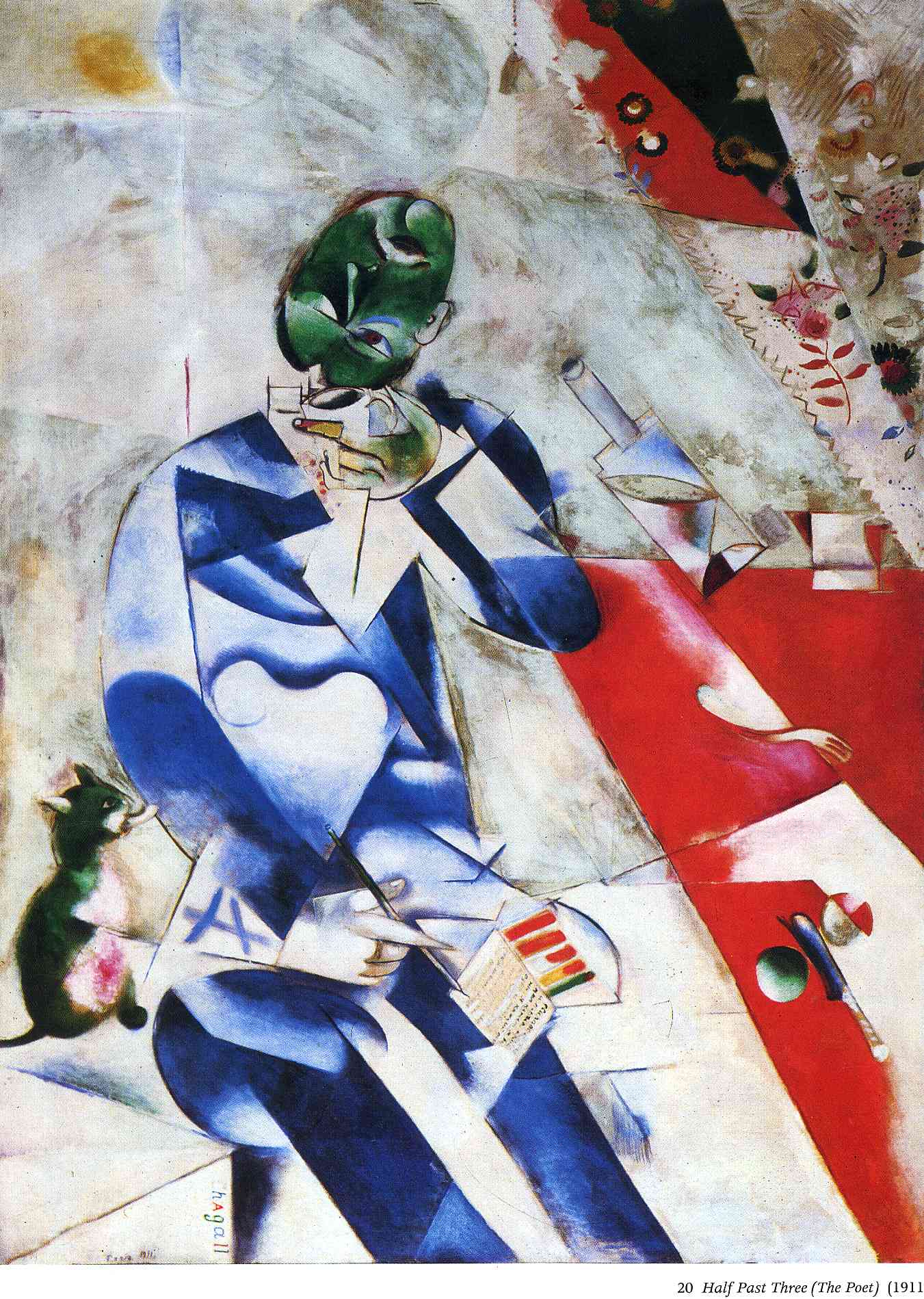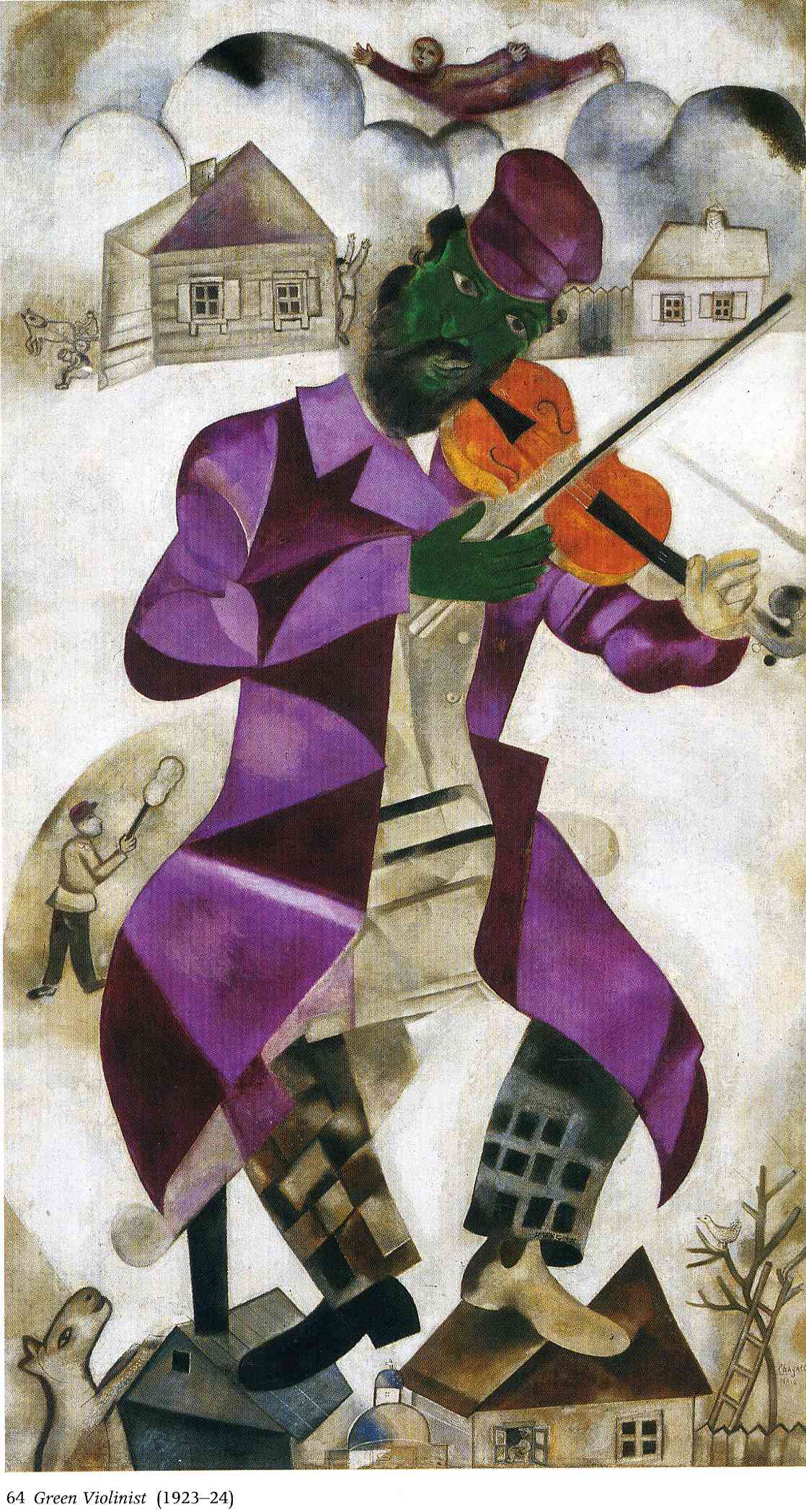Marc Chagall
by Justin Chae
One of the most renown artists of
the early to mid 20th century, Marc Chagall’s masterpieces are found
across Europe and the world in various museums and buildings. Chagall was born in 1887 in the city of
Liozna, Russia. The eldest of nine
children, Marc Chagall lived a taxing childhood, having to fight for education
and equal opportunities due to his Jewish background. At the age of 13, his mother had to bribe
the headmaster of the local high school to allow Chagall to attend. In an examination of Chagall’s life written
by Jacob Baal-Teshuva, it is stated that the main turning point of Chagall’s
artistic life took place at this high school when he noticed a fellow student’s
drawing, stating that this moment was an immediate revelation and a completely
new concept introduced into his life. He
immediately began going to the local library to find images in books, copying
these pictures as practice until he decided to devote himself to becoming an artist.
Marc Chagall moved to Paris in 1910,
an era where Cubism was becoming the leading movement in art across
Europe. Speaking no French, Chagall
worked his way to adapt to Cubism, also enrolling in the prestigious Ecole de
Paris art academy. In his early
paintings during these years such as Half
Past Three (1911), one can notice the abstract and dynamic nature of
Cubism.
Although Chagall followed the
manners of Cubism in breaking up objects and reassembling them into unique
forms for several years, he began to reject many of the trends that Cubism was
inducing and started to revert back to his own unique style of adding emotion,
vibrant colors, and humor into his works (Wolf). Although Chagall was completely surrounded by
French culture, he remained in touch with his Russian roots and used subjects
from back home in his later paintings, such as village scenes, fiddlers, and
freely floating figures that possibly indicate his longing to return back
home.
Along with Cubism, Chagall was
strongly influenced by Surrealism as well, a movement inspired by imagination
and intriguing the conscious mind. He
adapted these styles for the early 1920’s, seen in works such as the Green Violinist (1923). The Russian roots are clearly exhibited in
this work, and fiddlers on rooftops were a popular motif of Chagall's, stemming
from his memories of Vitebsk and the Russian countryside he called home as a
child. Chagall’s connection to his
Jewish cultural roots is also apparent in the themes present in the artwork,
and the Surrealist influence is seen in the literal color of the subject along
with the fantastical atmosphere of the piece as a whole. Appropriately, the very well known and
celebrated musical Fiddler on the Roof
received its name from one of Chagall's painting.
As turmoil began to break out across
Europe during the mid 1900’s, Chagall’s works began to lean heavily towards
religious-themed subjects, depicting scenes from the Old Testament and creating
etchings and other different forms of media.
His style remained fairly consist for a large portion of his life during
this time, represented in works such as White
Crucifixion (1938), which contain a mix of very realistic elements as well
as various abstractions that complement and help develop the scene and tone of
composition. After the conflicts began
to settle down, Chagall devoted his later years in life to major works
commissioned by international organizations such as the United Nations, for
whom he created the large stained-glass piece Peace (1964).
Chagall also helped develop a series of 17 bliblical
themed paintings which he offered to the French State in 1966. These collections along with several
elaborate mosaics and glass works can be now seen at the Musée Marc Chagall, known also as the Marc Chagall Biblical Message
Museum. These works can be seen in
photographs taken by me at the museum, with my favorite piece being the
harpsichord decorated on the interior by another one of Chagall’s airy, light
themed biblical depictions. In
conclusion, I believe that Marc Chagall is one of the most unique artists with
very interesting works that span across an extensive time period, adapt to
changing trends, yet maintain Chagall’s signature characteristics throughout
his lifetime.
Harpsichord
painted by Chagall depicting a dream-like, biblical scene
Example of two of Chagall’s 17 biblical paintings from later in his life found at Musée Marc Chagall
Extremely elaborate mosaic at Musée Marc Chagall depicting a symbolic circle of life including
various animals and wildlife on the outer circle.
Bibliography:
Baal-Teshuva, Jacob. Marc Chagall, Taschen (1998, 2008)
Wolf, Justin. "Marc Chagall Biography, Art, and
Analysis of Works." The Art Story. The Art Story Foundation, n.d. Web. http://www.theartstory.org/artist-chagall-marc.htm
13 Feb. 2017.








No comments:
Post a Comment